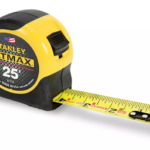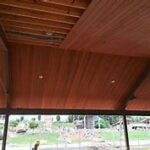Installing a tongue and groove ceiling can add a beautiful touch to any room. However, there are common mistakes that many DIY enthusiasts and even some professionals make during the installation process. Avoid these pitfalls to ensure a stunning and long-lasting finish.
1. Not Using Good Quality Wood
Using low-quality wood can lead to a host of problems including warping, cracking, and an uneven finish. Invest in high-quality, kiln-dried wood for a smoother installation and better durability.
2. Wrong Board Design for the Room
Choosing the wrong board design can affect the overall aesthetic and function of your ceiling. Be sure to select a design that complements your room’s style and dimensions.
3. Not Measuring the Room Out Properly
Accurate measurements are crucial. Failing to measure the room correctly can result in wasted materials and a poor fit. Always double-check your measurements before purchasing and cutting your boards.
4. Installing the Boards in the Wrong Direction
The direction in which you install your boards can affect the visual flow and structural integrity. Typically, boards should run perpendicular to the ceiling joists. Consider the room’s natural light and layout when deciding on board direction.
5. Mis-Markings for Your Starter Course
Starting with improper markings can throw off the entire installation. Ensure your starter course is correctly marked and aligned to avoid uneven rows and gaps.
6. Using the Wrong Nails and Nail Gun
Using incorrect nails or a nail gun not suited for the job can cause the boards to loosen over time. Choose nails that are the right length and gauge for your wood, and a nail gun that offers the appropriate power and precision.
7. Not Leaving Proper Expansion Gaps Around the Perimeter
Wood expands and contracts with changes in humidity and temperature. Failing to leave expansion gaps around the perimeter can lead to buckling and gaps. A 1/8-inch gap is typically recommended.
8. Skipping the Acclimation Process
Wood needs time to acclimate to the room’s environment before installation. Skipping this step can result in boards that warp or shrink after installation. Let the wood sit in the room for at least 48 hours before you begin.
9. Improperly Securing the Boards
Not securing the boards properly can cause them to loosen over time. Ensure that each board is securely fastened to prevent any movement or gaps.
10. Ignoring Ceiling Imperfections
If your ceiling has imperfections such as uneven surfaces or damage, it can affect the installation of the tongue and groove boards. Address any issues with the ceiling before you begin the installation process.



